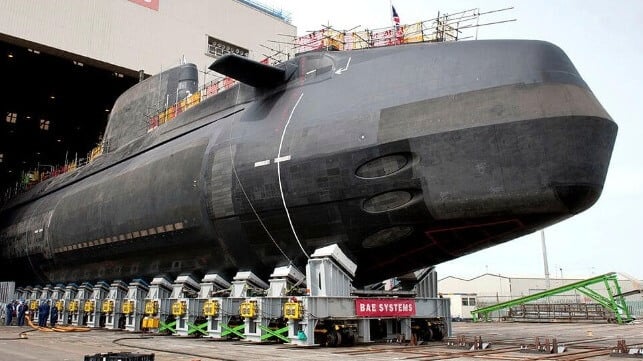The Limits on Australia's Plans for a Nuclear Shipbuilding Industry
If the past two generations of submarine building projects in Adelaide did not create a lasting, flourishing industry, why should this one?

[By John Edwards]
Enthusing about Australia’s nuclear-powered submarine project, Prime Minister Anthony Albanese drew an analogy with the creation of an Australian car industry after the Second World War. As the car industry “helped drive advanced manufacturing” in Australia, so too the submarine project will be a “catalyst for jobs, innovation and growth”. In the Prime Minister’s telling, the submarine project is an industry policy innovation designed to create a new high technology base for Australian manufacturing, a frequently expressed Albanese government aim.
The Prime Minister is surely right that if Australia could build a motor vehicle industry when its population was a third of today’s, when its economic size was a tenth of today’s, it can now build nuclear-powered submarines. Admittedly, there are plenty of problems. Australia today does not have the engineering skills, the familiarity with nuclear propulsion, or the means to store highly enriched spent uranium. But with American and British help, with sufficient money and determination, all these needs and more can be met and a new industry of making and maintaining nuclear-powered submarines can be created, just as a car industry was created over 70 years ago.
The more troubling aspect of Albanese’s analogy is that Australia no longer has a car industry. Controlled by overseas-owned car makers, the Australian industry was never very interested in exports. As time went by, as Japan and then Korea became major producers, as the efficient size of global car production lines increased, as research and development costs increased for major producers, the Australian car industry became less and less competitive. It survived only behind high tariff barriers. Australian cars were among the most expensive in the world.
In the end the Australian car industry fell behind changing market demand for compact sedans, and later for SUVs. Loved in the 1950s, by the 1990s the Australian-made four door six-cylinder sedan was no longer wanted. High Australian wages were not the problem. By then wages in Japan and South Korea were equal to or better than in Australia, and in any case, robots were replacing workers. The problem was the lack of scale in an industry that did not seek a world market.
What was true for the car industry will be even more so for the Australian nuclear-powered submarine industry. Dependent on their patents, their intellectual property licenses, their continuing technology innovations, confined by the very war superiority that its advocates say nuclear-powered submarines possess, the Australian submarine industry will never be permitted by its American and British sponsors to be an export industry. It will build eight submarines for the Australian government, and then become a maintenance business. Long before the last boat is delivered, the business will be winding down.
It might become a hub for new technology industries, but probably won’t. Nuclear propulsion is after all now a very old technology. The first nuclear-powered submarine was launched just on 70 years ago. By the time Australian built nuclear-powered submarines are launched the technology will be over a century old. Australia will anyway acquire only bits of the technology. The nuclear reactors will be made elsewhere, the weapons, communications and control systems made elsewhere, and the vessels designed elsewhere.
The submarine project is a cut above a flat pack assembly business, though perhaps not all that much above. If the past two generations of submarine building projects in Adelaide did not create a major flourishing industry which outlasted the submarine projects, why should this one?
It is certainly true there will be a lot of valuable high technology skills employed in building submarines in Australia, including frontier IT skills, project management, materials science, and other commercial skills involved in such a complex and expensive project. These skills will be employed in making submarines, however, not in businesses with a prospect of a sustained commercial future.
The skills will be diverted from civilian commercial uses. The cost of the project will be the opportunities missed for deploying those skills elsewhere. The more complex the project, the higher the demand for advanced skills, the bigger the loss to Australia’s non-defense economy.
In these respects the submarine project reflects the vast change in the relationship between defense industries and commercial industries over the last half century. Once the leaders, defense industries are now followers. In the United States the military pioneered in funding and exploring new technologies that had defense applications but led to the creation of new commercial industries. These included jet engines, nuclear energy, semiconductors, the internet, space satellites, and navigation systems. Today commercial research and development vastly exceeds military research and development, with the military far more often adapting commercial developments than the other way around.
Whatever the arguments for Australia building nuclear-powered submarines, the creation of commercial spin-offs, of new high technology commercial industries, should not be among them.
John Edwards is a Senior Fellow at the Lowy Institute and an Adjunct Professor with the John Curtin Institute of Public Policy at Curtin University. He is also a board member of the industry superannuation fund Cbus and of Frontier Advisors.
This article appears courtesy of The Lowy Interpreter and may be found in its original form here.
The opinions expressed herein are the author's and not necessarily those of The Maritime Executive.
